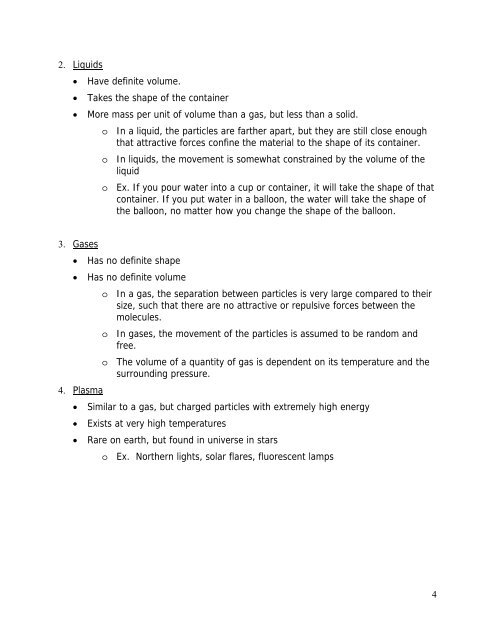Phase changes of water - Oakland Schools
Phase changes of water - Oakland Schools
Phase changes of water - Oakland Schools
Create successful ePaper yourself
Turn your PDF publications into a flip-book with our unique Google optimized e-Paper software.
2. Liquids<br />
• Have definite volume.<br />
• Takes the shape <strong>of</strong> the container<br />
• More mass per unit <strong>of</strong> volume than a gas, but less than a solid.<br />
o In a liquid, the particles are farther apart, but they are still close enough<br />
that attractive forces confine the material to the shape <strong>of</strong> its container.<br />
o In liquids, the movement is somewhat constrained by the volume <strong>of</strong> the<br />
liquid<br />
o Ex. If you pour <strong>water</strong> into a cup or container, it will take the shape <strong>of</strong> that<br />
container. If you put <strong>water</strong> in a balloon, the <strong>water</strong> will take the shape <strong>of</strong><br />
the balloon, no matter how you change the shape <strong>of</strong> the balloon.<br />
3. Gases<br />
• Has no definite shape<br />
• Has no definite volume<br />
4. Plasma<br />
o In a gas, the separation between particles is very large compared to their<br />
size, such that there are no attractive or repulsive forces between the<br />
molecules.<br />
o In gases, the movement <strong>of</strong> the particles is assumed to be random and<br />
free.<br />
o The volume <strong>of</strong> a quantity <strong>of</strong> gas is dependent on its temperature and the<br />
surrounding pressure.<br />
• Similar to a gas, but charged particles with extremely high energy<br />
• Exists at very high temperatures<br />
• Rare on earth, but found in universe in stars<br />
o Ex. Northern lights, solar flares, fluorescent lamps<br />
4
















